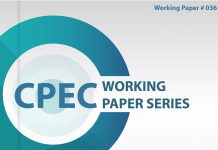The traditional approaches to the integration of low-income countries have been the assembly of intermediate goods, which are generally produced in high-income countries, for re-export to the final consumers. This strategy should be re-evaluated, especially for a low-income country such as Pakistan, to integrate more value-added activities and services. The main objective of this research is to identify the possible value chain for integration and ranking of a suitable value chain based on the criteria of potential volumes. For instance, a country like Pakistan has been following the traditional integration cycle, but the Belt and Road Initiative and China Pakistan Economic Corridor (CPEC) projects provide an ample opportunity to strategically align itself with the Chinese exporting industrialization regime, which will create a baseline for the much-needed industrial revolution in Pakistan. Therefore, the governments of both China and Pakistan have rightly incorporated special economic zones (SEZs) as a kick-starter for the Industrial revolution in Pakistan under the banner of CPEC, keeping the success of Chinese SEZs in consideration. This chapter will explicitly show the rationale and decisional process for how Pakistan can efficiently utilize CPEC projects to integrate its industry and trade with the global value chains of China, coupled with its geostrategic economic advantages, and create a ‘win–win’ for both.
Keywords: Global value chains, Trade, Light engineering, China Pakistan Economic Corridor (CPEC), Belt and Road Initiative (BRI), Relocation Industry
Yasir Arrfat
Research Associate, Centre of Excellence for CPEC

 中文
中文 Urdu
Urdu












